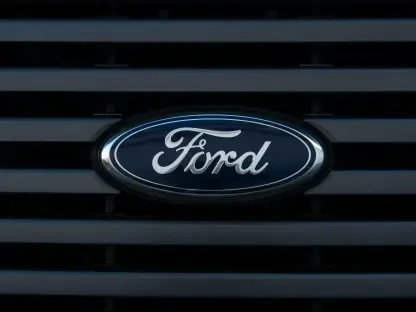The potential dismantling of the Energy Star program has ignited a robust response from the International Facility Management Association (IFMA). Initiated under the administration of George H.W. Bush in 1992, Energy Star is widely recognized for its ongoing commitment to promoting energy-efficient technologies that have purportedly led to savings of approximately $500 billion for consumers and businesses. In the fiscal year 2025 budget, however, the Trump administration has put forth a proposal that seeks to eliminate funding for the Atmospheric Protection Program, which oversees Energy Star. This decision stems from beliefs that such initiatives unduly expand governmental influence, imposing regulations that could stymie economic development for American industries while saddling them with expensive mandates.
The Role of Energy Star in Sustainable Practices
Economic and Environmental Benefits
Energy Star has become integral to supporting global benchmarks for energy efficiency across multiple domains, such as commercial building systems and household appliances. By endorsing voluntary efficiency standards, the program has helped in both reducing utility bills and mitigating environmental impact. This has positioned Energy Star not merely as a domestic initiative but as a crucial player internationally, aiding the adoption of energy-conscious practices in workplaces and homes. The collective impact of these practices is reflected in enhanced sustainability that underpins fundamental business operations and drives corporate responsibility initiatives. Mitigating energy waste through well-recognized standards has exemplified how informed purchasing choices can enhance a company’s bottom line while bolstering environmental stewardship.
Advocacy by Influential Organizations
Backlash against the proposed budget cut has stirred notable support among businesses, non-profits, and municipalities, all unified in their desire to maintain Energy Star. Noteworthy advocates, such as the National Electrical Manufacturers Association and the American Council for an Energy-Efficient Economy, have expressed strong support. With approximately 1,000 endorsements by diverse entities, including municipalities that manage extensive infrastructure, these voices stand united in favoring the program’s retention. Their arguments are anchored in Energy Star’s historical effectiveness and its role in advancing technologies that not only improve energy efficiency but also set cost-saving precedents. Such advocacy highlights how crucial the program is for maintaining momentum in the energy innovation landscape.
Arguments Against Government Overreach
The Viewpoint of Deregulation Proponents
Critics, including those aligned with the Competitive Enterprise Institute, argue that market demand, rather than government initiatives, should drive the adoption of efficient labeling systems. Their belief is that consumers and industries themselves are equipped to recognize the value in sourcing energy-efficient products, independent of federal mandates. Such a perspective advocates for a shift towards private certification organizations, empowered to provide necessary endorsements in response to market cues. Proponents of this deregulated approach assert that reliance on competitive forces fosters innovation and ultimately results in more cost-effective solutions tailored to specific consumer needs.
Balancing Regulation and Market Freedoms
The debate over Energy Star encompasses broader themes of regulation versus market freedom. On one hand, critics voice concerns about federal overreach dictating the contours of industry practices, sensing a potential hindrance to entrepreneurial initiatives. Conversely, proponents emphasize that government-backed programs like Energy Star provide a stable foundation of reliability and trust, essential for consumers navigating an increasingly complex market. IFMA’s vocal defense of Energy Star underscores a nuanced understanding of this dichotomy. The association argues that an optimal balance between regulation and market autonomy could be achieved, enabling enhanced economic returns while fostering environmentally sustainable practices.
Concluding Thoughts on the Future of Energy Star
Critics, notably those with ties to the Competitive Enterprise Institute, contend that the impetus for adopting efficient labeling systems should emerge from the marketplace rather than governmental directives. They maintain that consumers and industries possess the acumen to discern the benefits of choosing energy-efficient products without needing federal mandates to guide them. Their vision leans towards empowering private certification entities, which would be responsible for offering necessary endorsements prompted by market signals. Supporters of this deregulated model argue that free-market competition sparks innovation and, over time, generates more affordable solutions fine-tuned to meet specific consumer demands. By allowing competitive forces to steer the process, solutions may evolve that are both innovative and better aligned with individual preferences and requirements. This stance underscores a confidence in market efficiency to naturally ensure that the best and most cost-effective products thrive, catering successfully to varied consumer preferences.









